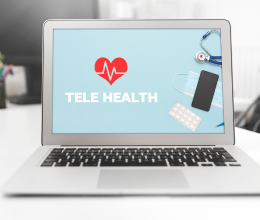
How to Safely Use Telehealth Services
Published: May 29, 2024
Telehealth is a way for health providers to diagnose, treat, and communicate with patients remotely, by phone or video. Telehealth is a quick and easy alternative to your typical doctor’s appointment, but it could also be a quick and easy way for cybercriminals to find targets.
Here are some ways to safeguard your personal information while using telehealth services.
Keep Your Device Up-to-Date
Whether you connect to telehealth using a smartphone or a computer, make sure the device is up-to-date with the latest security patches. This includes updating all applications, not just the ones used for telehealth purposes. Each app is a potential point of entry for cybercriminals. If the bad guys gain access to your device in any way, then your sensitive medical information will be at risk.
Use an Advanced Login
Telehealth services typically require users to create a username and password. If the service offers Multi-factor Authentication (MFA), use it! MFA requires you to enter your password and then enter another form of verification, such as a code sent via text message. If MFA isn’t offered, we recommend using a password manager to generate and securely store complex passwords.
Connect with a Secure Network
Never use a public wifi connection for telehealth services. You never know who could be watching and tracking your activity. When connecting from home, be sure to set up a strong password for your router. Default router passwords are often public knowledge or easy to guess. For the most secure network, connect to a virtual private network (VPN), which encrypts web traffic to protect your information.

